New partnership saves young herons in Oakland
By Ilana DeBare
The ficus trees of downtown Oakland are an enticing but brutal spot for a heron rookery — lush canopies and nearby food at Lake Merritt and the Oakland estuary, but deadly concrete sidewalks and traffic for young birds that fall from the trees.
Now Golden Gate Bird Alliance has forged a partnership with the Oakland Zoo and International Bird Rescue to save the lives of fallen and injured young herons.
This spring, GGBA trained 25 volunteer docents to monitor the downtown Oakland nesting colony, which includes over 75 Black-crowned Night-Heron Nests plus dozens of Snowy Egret nests.
The docents count and track the nests, engage with passersby who want to learn about the birds, and keep an eye out for fallen herons that need help. When they find an injured bird, they contact the Zoo, which sends technicians to pick up the bird and provide emergency care. Once the bird is stabilized, it’s transported to International Bird Rescue in Fairfield, which provides veterinary treatment and nurture until the young bird is ready to be released into a suitable wild habitat.
So far more than ten injured night-herons have been retrieved from the Oakland streets.
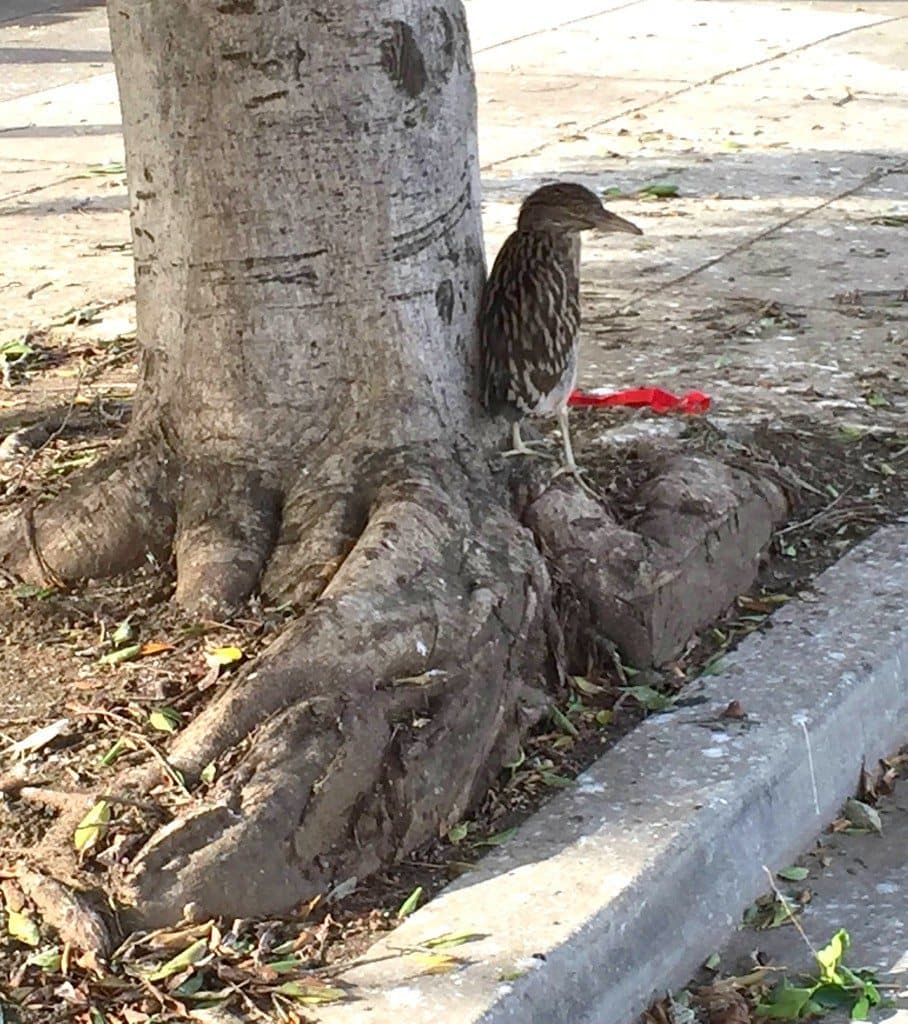 Fallen heron in downtown Oakland / Photo by Kaya Cohn
Fallen heron in downtown Oakland / Photo by Kaya Cohn
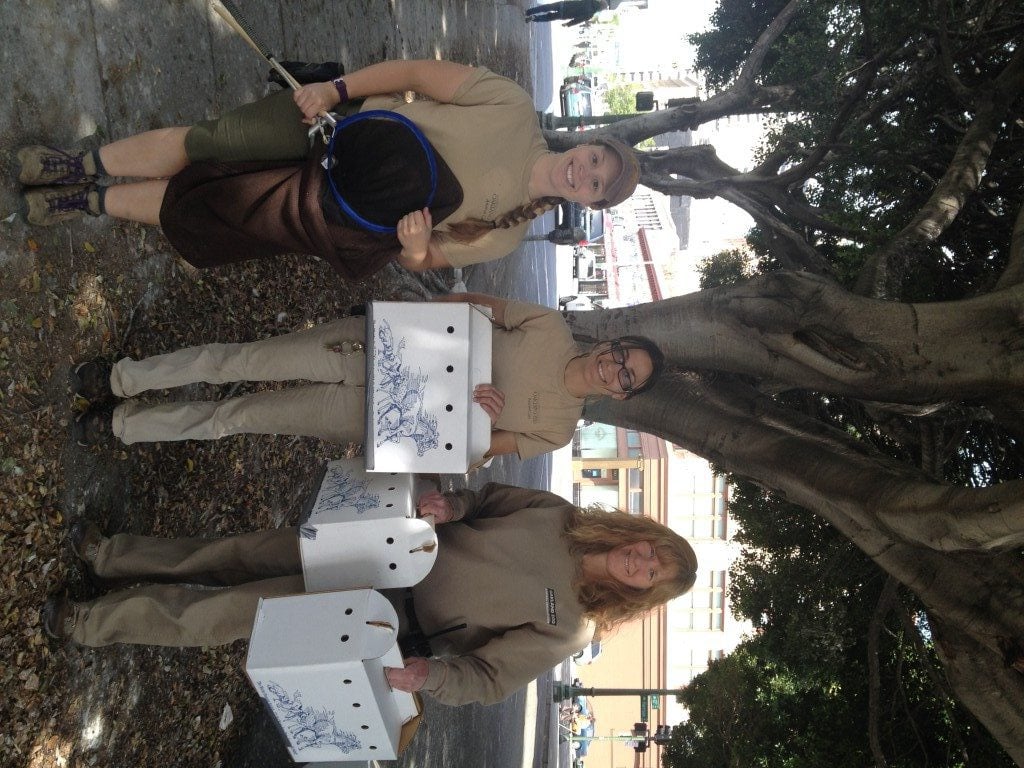 Oakland Zoo staff ready to retrieve herons / Photo by Oakland Zoo
Oakland Zoo staff ready to retrieve herons / Photo by Oakland Zoo
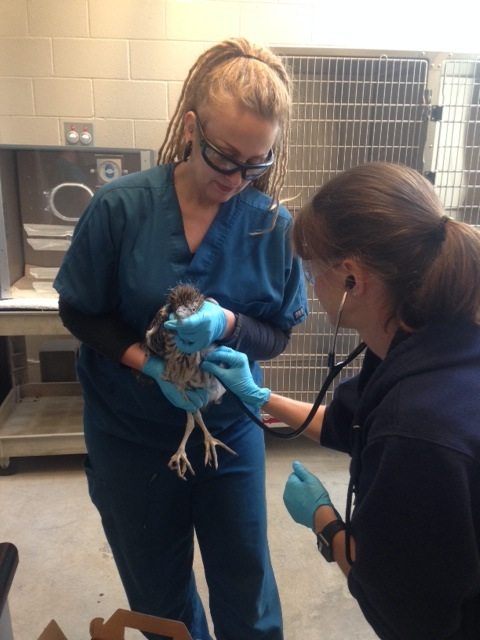 Heron receiving care at Oakland Zoo / Photo by Oakland Zoo
Heron receiving care at Oakland Zoo / Photo by Oakland Zoo
“We are so heartened by the crucial assistance we’ve received from the Oakland Zoo and IBR in helping to save the lives of these young herons growing up in the heart of downtown Oakland,” said GGBA Executive Director Cindy Margulis, who together with GGBA Eco-Education Coordinator Marissa Ortega-Welch set up the new heron program.
Night-herons and Snowy Egrets are colonial nesters, which means there can be dozens of nests of both species coexisting in a single tree. The juvenile herons often clamber around on branches inside the canopy before they learn to fly, putting them at risk of falling.
In a less urban habitat, the young herons’ falls are often cushioned by understory or bushes. In downtown Oakland, they hit a concrete sidewalk and then may face oncoming cars.
GGBA’s efforts grew out of a nationally-publicized incident two years ago when tree trimmers hired by the downtown Oakland post office destroyed branches with active nests, leaving a number of young herons injured and homeless.
Since then, GGBA has been working to find a long-term solution to protect the rookery and its residents.…

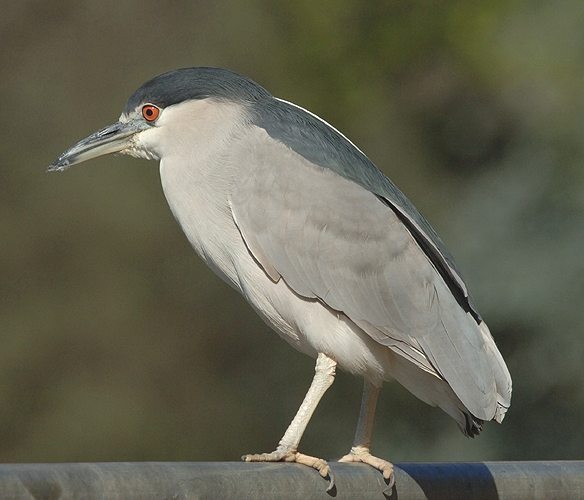
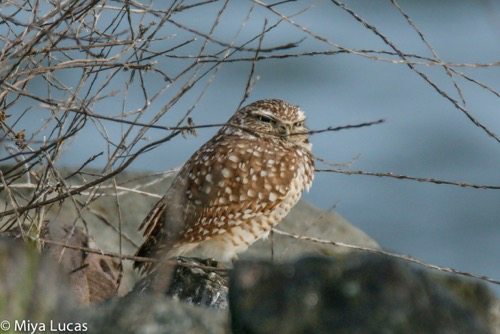
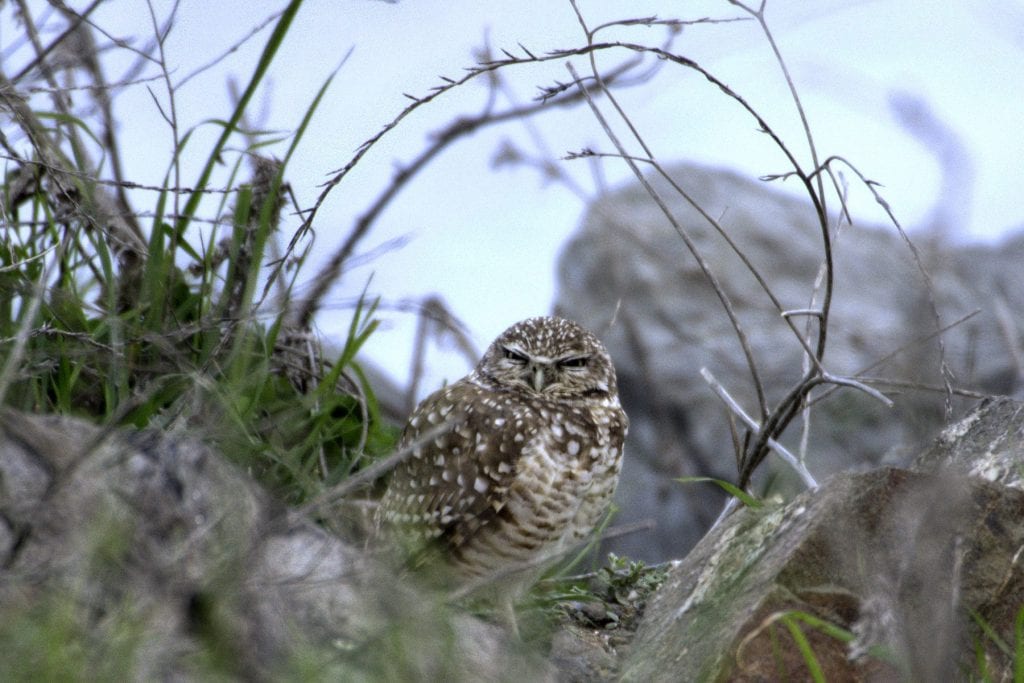 Burrowing owl at Cesar Chavez Park in February 2016, by Doug Donaldson
Burrowing owl at Cesar Chavez Park in February 2016, by Doug Donaldson
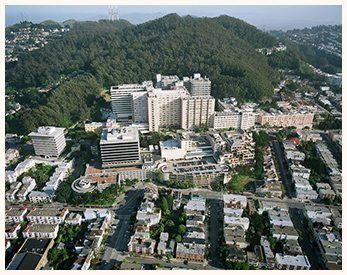
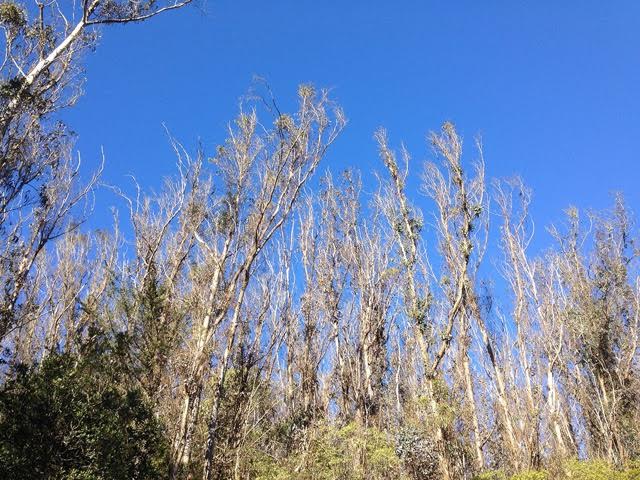 Bare crowns in stand of dead or dying eucalyptus on the East Ridge across from UCSF student housing / Photo by Craig Dawson
Bare crowns in stand of dead or dying eucalyptus on the East Ridge across from UCSF student housing / Photo by Craig Dawson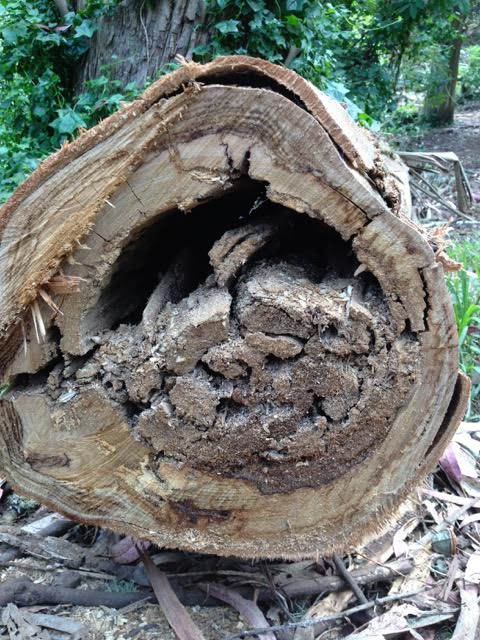 Cross-section of diseased tree / Photo by Craig Dawson
Cross-section of diseased tree / Photo by Craig Dawson
 Cindy Margulis explains the two species of egrets that rose on Bay Farm Island / Photo by Ilana DeBare
Cindy Margulis explains the two species of egrets that rose on Bay Farm Island / Photo by Ilana DeBare